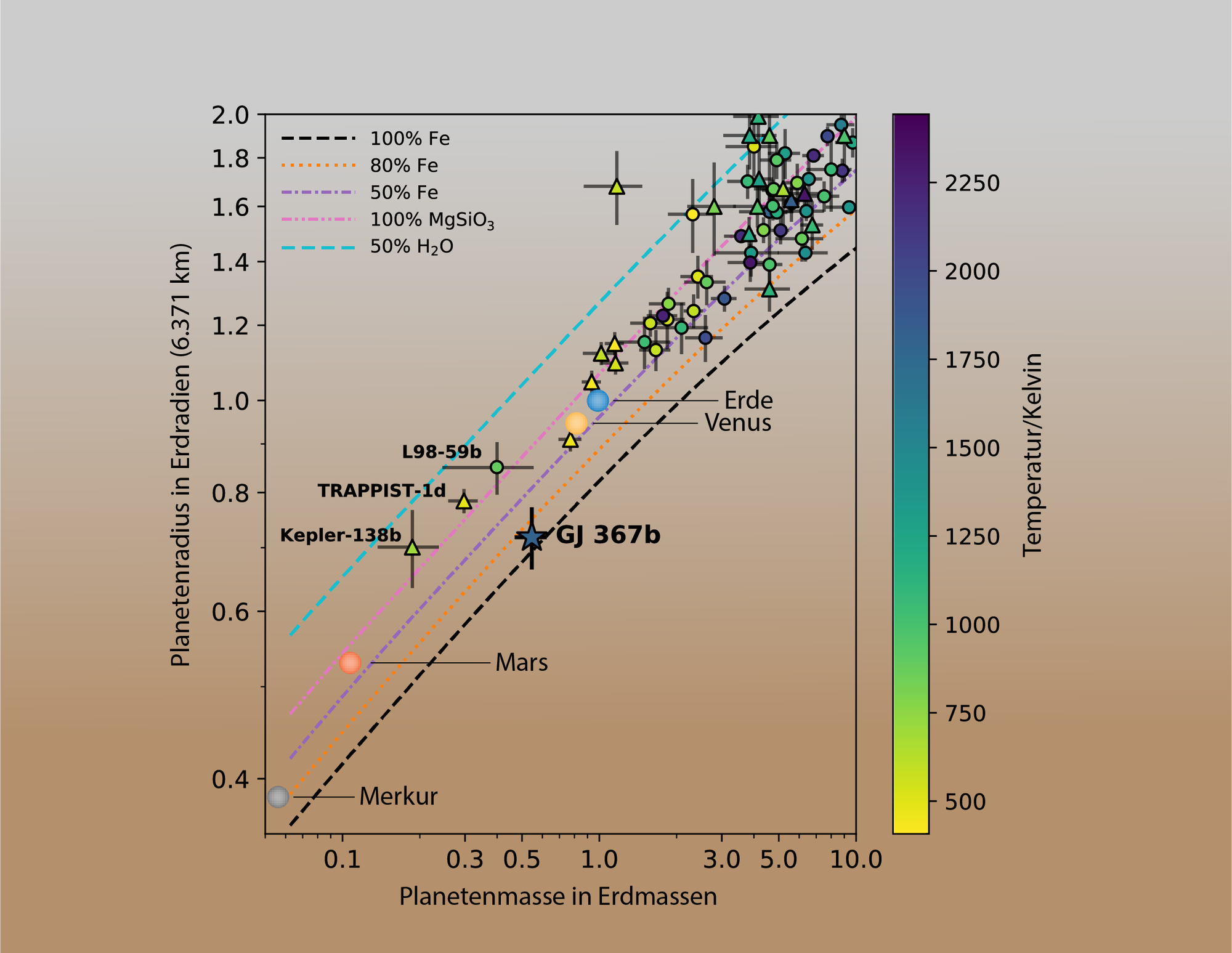Mass and radius of known small planets
Mass and radius of known small planets
The diagram shows the ratio of mass (horizontal scale) and radius (vertical scale) of exoplanets smaller than two Earth radii and with mass and radius precisions better than 30 percent. The radius and mass of the planets are given as multiples or fractions of the Earth's radius and mass. Circle symbols show planets whose mass was determined using the radial velocity method. Triangles show planets whose mass was determined using transit time variations. The crosses at the data points indicate the precision of the measurements. GJ367 is one of the smallest planets and its mass was determined with the highest precision using the radial velocity method. The terrestrial planets of the Solar System – Mercury, Venus, Earth and Mars – are plotted for comparison. The colours of the data points indicate the equilibrium temperatures of the day side illuminated by the star. Theoretical mass-radius relationships can be used to infer the planet's interior. Five types of planetary cores are drawn: a pure iron core (100% Fe), cores with decreasing iron content (80% and 50%), pure rocky planets (100% MgSiO3) and a planetary core consisting of 50% water. The newly discovered exoplanet GJ 367b is probably an iron-dominated planet.

